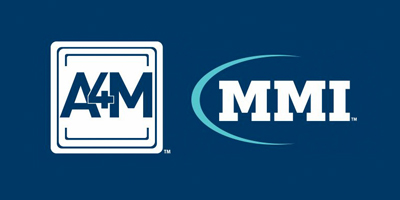As COVID-19 vaccines inch closer to becoming available for children and adolescents, the AAP is helping pediatricians prepare to administer them.
The AAP has updated its FAQs about COVID-19 vaccines and released new recommendations on how to prepare, how to implement vaccination in pediatric practices and how to get paid for vaccine administration.
The Food and Drug Administration (FDA) has granted emergency use authorization (EUA) to two-dose mRNA COVID-19 vaccines from Pfizer-BioNTech and Moderna and a single-dose viral vector vaccine from Johnson & Johnson.
Pfizer-BioNTech’s COVID-19 vaccine is the only one available for teens as young as 16. However, each manufacturer has been studying its vaccines in adolescents as young as 12, and at least one could be available this summer. Pfizer-BioNTech recently announced adolescent trials have shown efficacy of 100% with no significant safety concerns.
Pfizer-BioNTech and Moderna also are conducting trials of their mRNA vaccines in children ages 6 months through 11 years. Health officials have estimated vaccination in this age group could start in late 2021 or early 2022.
Preparing for vaccination
As pediatricians wait for these vaccines to complete trials and receive FDA approval, they can take several steps to prepare for vaccinating children:
- Enroll to administer vaccine in their state. This is separate from enrollment in the Vaccines for Children program.
- Catch up patients on other vaccines they may have missed. COVID-19 vaccines cannot be administered within 14 days of other vaccines.
- Learn about providing COVID-19 vaccines for adults, including enrolling in Medicare.
- Promote vaccine confidence using resources from the AAP and Centers for Disease Control and Prevention (CDC).
Vaccine implementation
Adolescents who are at least 16 do not need special consent to receive a COVID-19 vaccine, but pediatricians should inform them about the FDA’s EUA, the potential risks and benefits, their option to accept or refuse and any available alternatives.
Common side effects of the vaccines include injection site pain, fatigue, headache, muscle pain, chills, joint pain and fever. People should not receive a COVID-19 vaccine if they have a history of severe allergic reaction or an immediate allergic reaction of any severity to a previous dose of the vaccine or any of its components. Precautions should be taken for people with a history of immediate allergic reaction to any other vaccine or injectable therapy.
More data on side effects and contraindications for children and adolescents will become available during the FDA approval process.
Health officials are continuing to study the efficacy of vaccines on circulating variants and whether people who are vaccinated can transmit the virus to others. Patients should be counseled to continue taking precautions like wearing a well-fitting face mask and physical distancing even after they have been vaccinated.
Getting paid
Current Procedural Terminology codes have been developed to distinguish among each COVID-vaccine product and dose. A chart with those codes is available at https://bit.ly/3s0hyNB.
Uninsured children can receive COVID-19 vaccine through the CDC’s COVID-19 Vaccination Program, and payment is available from the Health Resources and Services Administration via the COVID-19 Uninsured Program Portal. Providers who want to enroll should contact their local public health jurisdictions.
Federal officials have announced Medicare payment amounts of $40 for each COVID-19 vaccine administration. The federal medical assistance percentage for all COVID-19 vaccines administered to Medicaid and Children’s Health Insurance Program enrollees is 100%. When vaccinating patients with private insurance, pediatricians should work with the payers with whom they contract to make sure they are paid appropriately.















